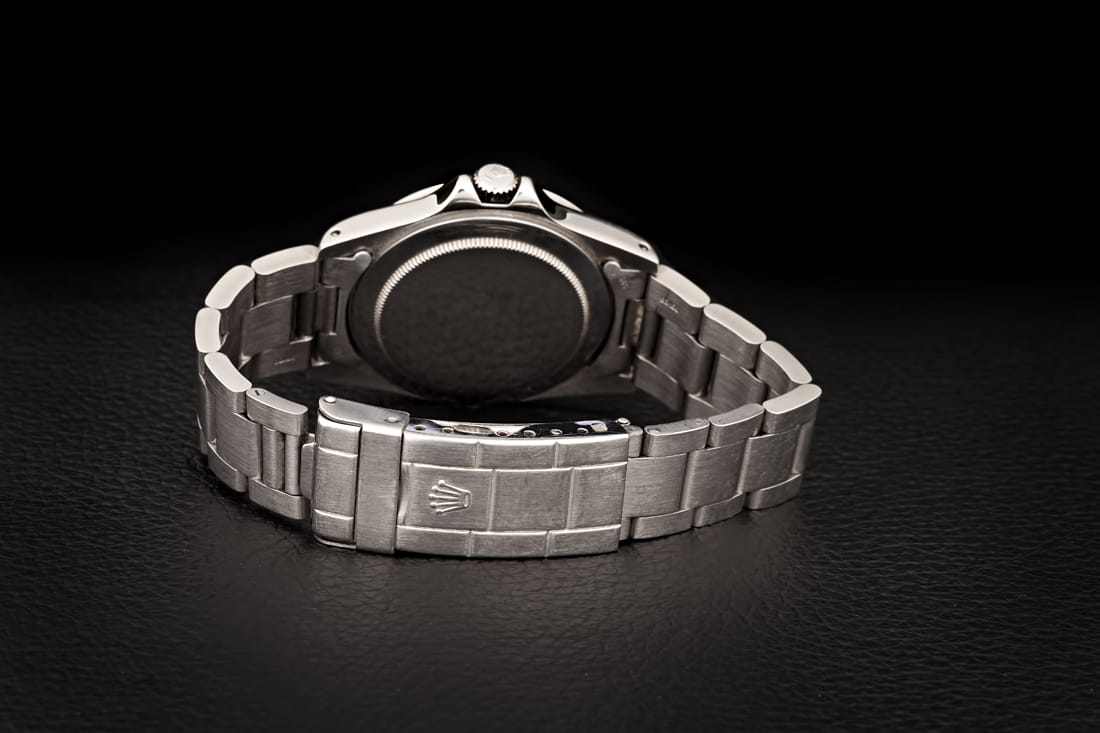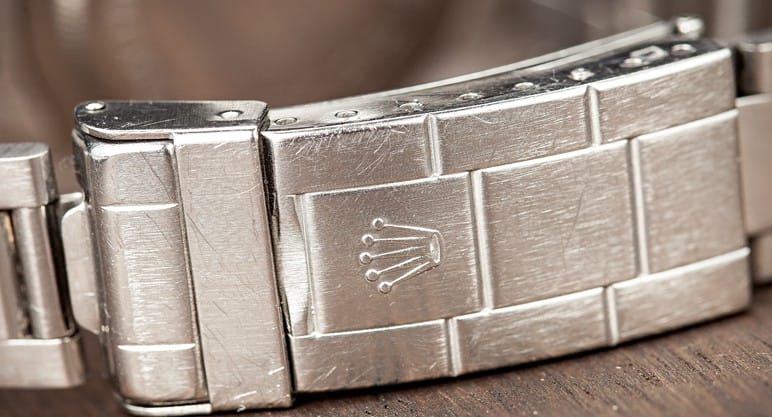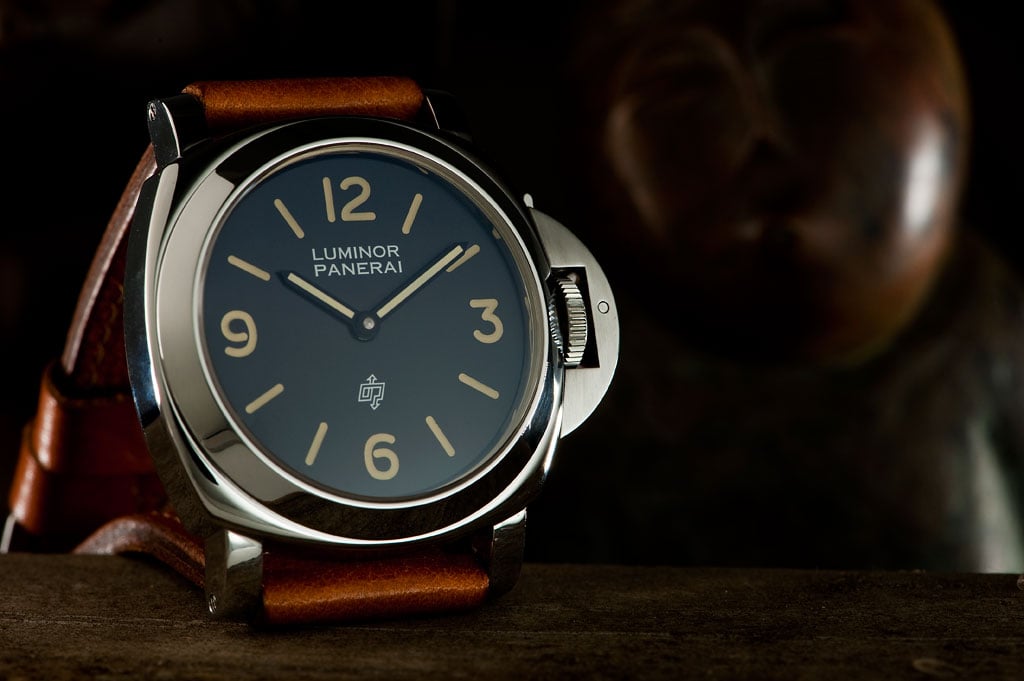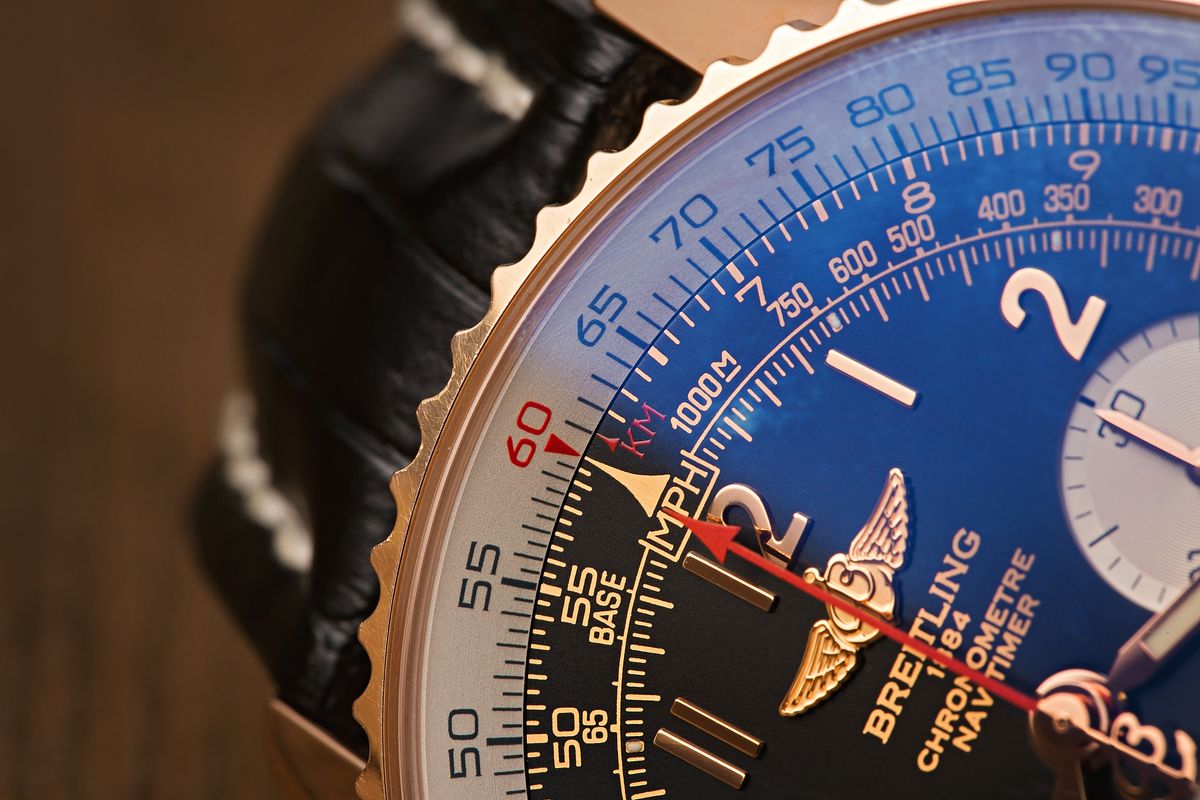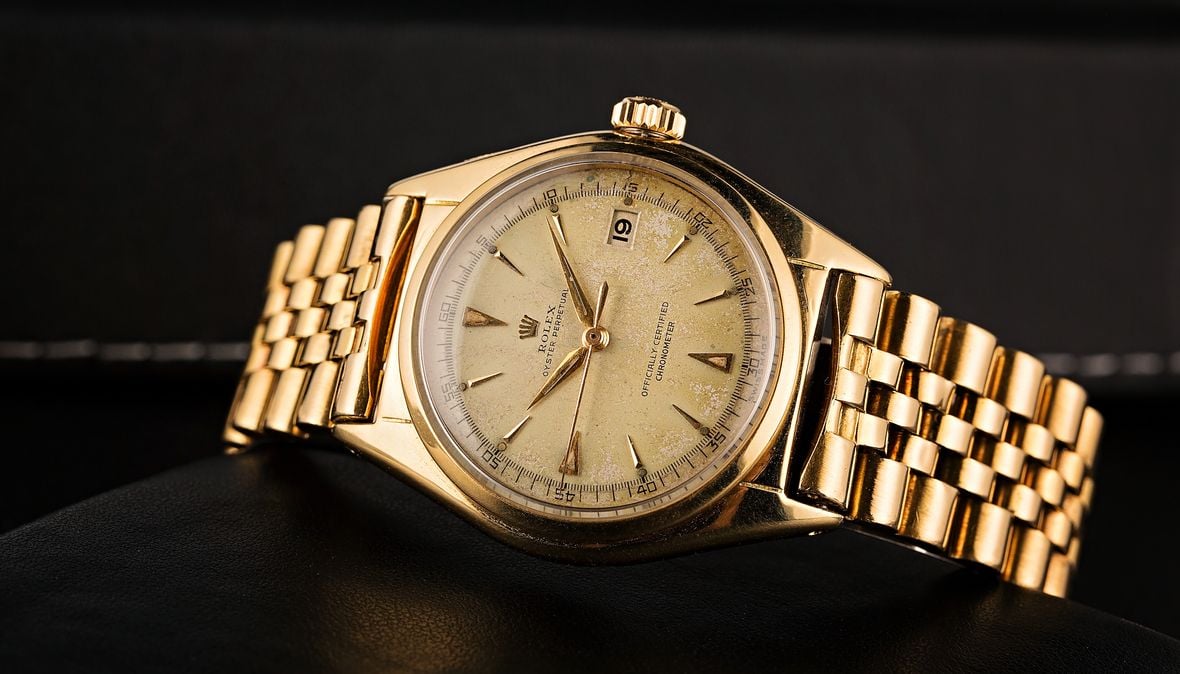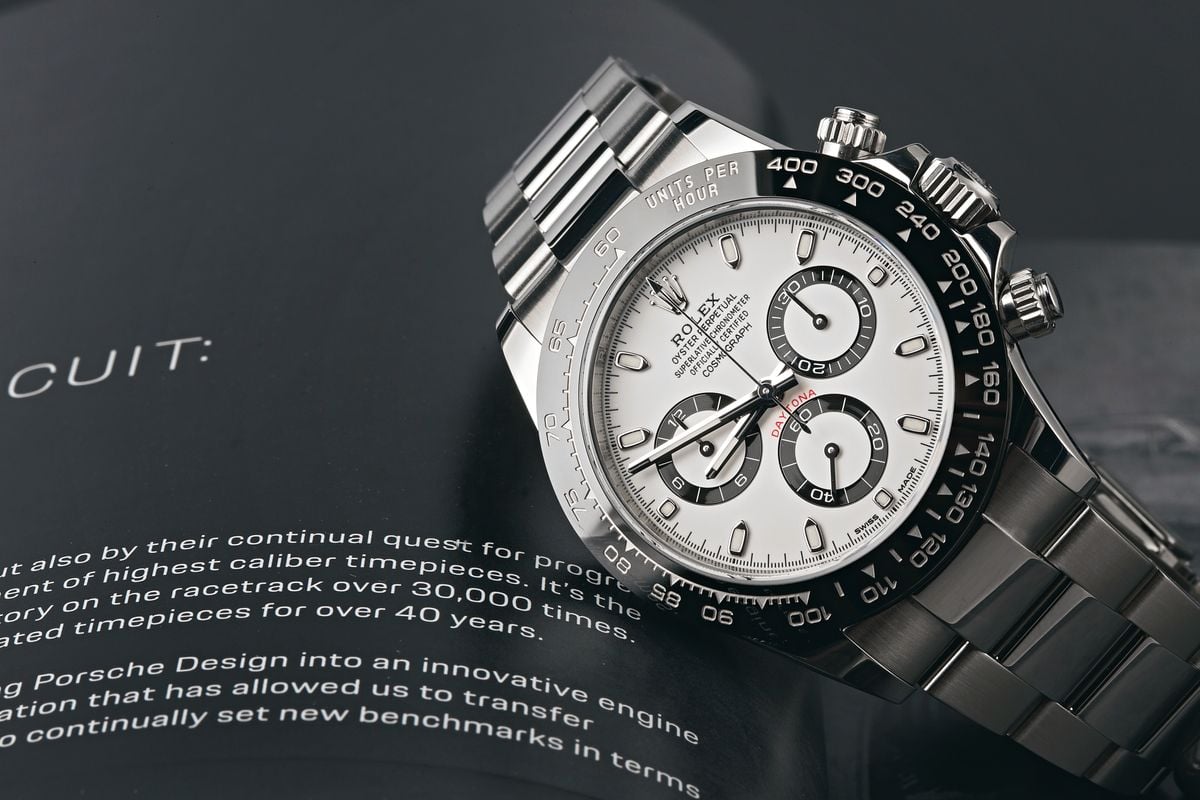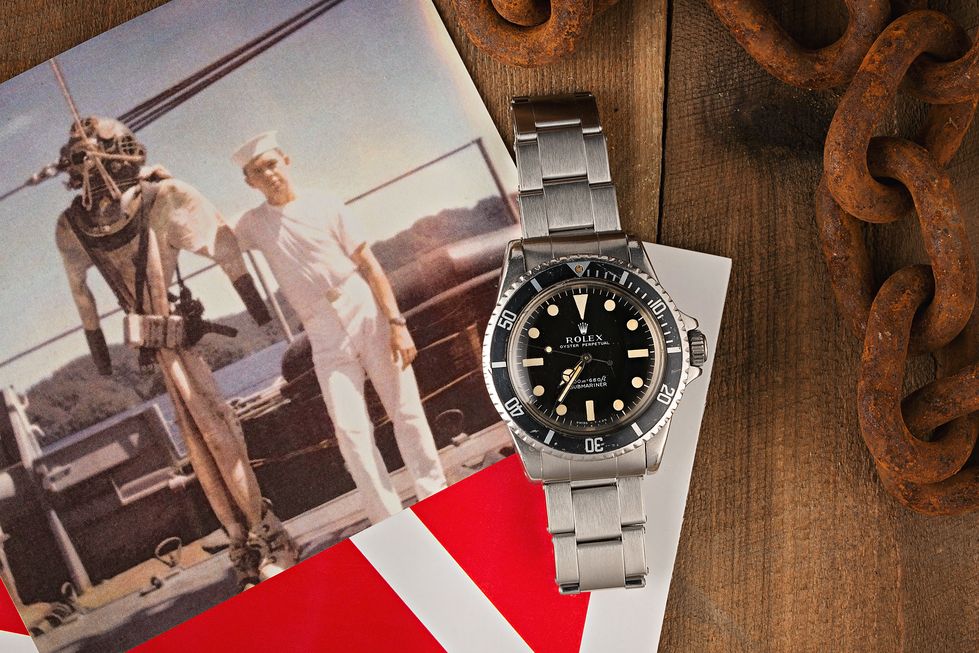For anyone new to the world of watch collecting, it can be something of a surprise just how important a role the bracelet plays in the overall scheme of things. A watch fitted to a leather strap has a completely different look and feel when compared to the exact same watch on a metal band. And it doesn’t even have to be as dramatic a change as that. For example, Rolex’s black and blue ‘Batman’ GMT-Master II has received two of the brand’s trio of bracelets over the years, and each one has lent the model its own distinctive and individual character. While the latest version sits on the five-link Jubilee – Rolex’s most intricate and dressy bracelet design, the older reference wears the Oyster bracelet – a more utilitarian, three-link bracelet that is the industry standard when it comes to securing the world’s favorite tool watches.
Over the years, all of the Rolex Professional Collection has worn the Oyster bracelet at one point or another, and for many Rolex watches, it is still the only option. Additionally, despite being the go-to bracelet for Rolex’s tool watches, the Oyster is also paired with models at the dressier end of the portfolio, such as the Sky-Dweller, Oyster Perpetual, and the Datejust. It is this remarkable degree of adaptability and timeless styling that help make it an icon in the horology industry. Below we explore the Rolex Oyster Bracelet in a bit more detail.
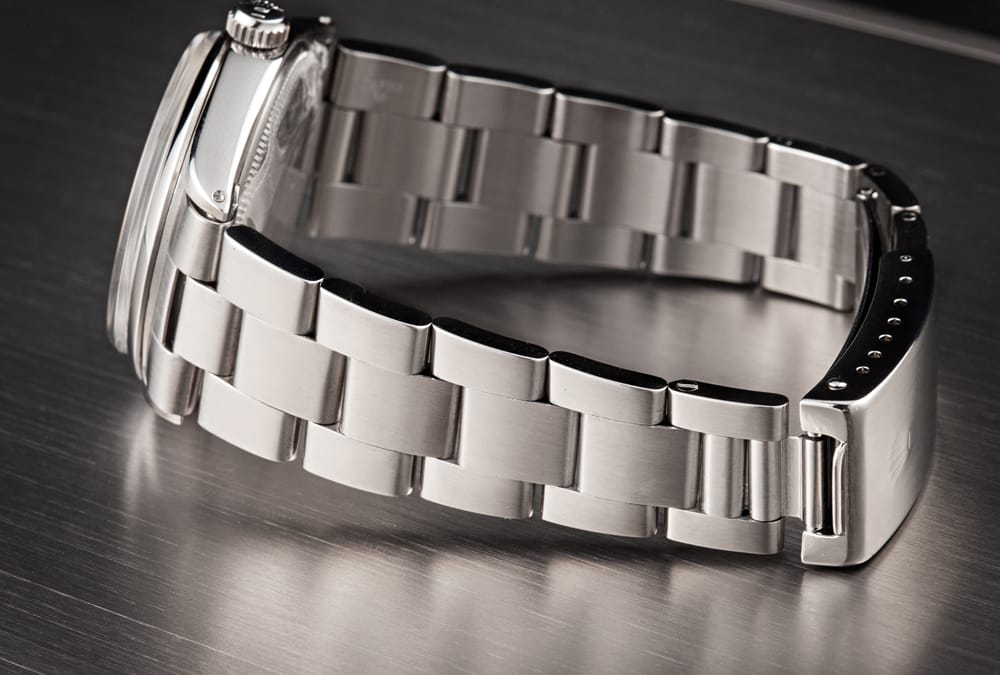
History of the Rolex Oyster Bracelet
It was only as recently as 1998 that Rolex officially brought the production of their bracelets in-house. That was the year they acquired their long-time contractor Gay Frères – the company also responsible for making Heuer’s beads of rice bracelet as well as the famous integrated example for Audemars Piguet’s Royal Oak. The relationship between Rolex and Gay Frères goes back to the 1930s when they supplied a band known as the Bonklip, a narrow-linked type nicknamed the Bamboo.
During that era, leather straps were by far the most common way of wearing a watch, with metal bracelets very much an optional extra, and an extremely expensive one at that, sometimes costing half as much again as the watch itself. Following the success of the 1945 release of the Jubilee bracelet, Rolex and Frères collaborated on a new, sportier bracelet option intended to match with the brand’s Bubble Back watches as well as their fledgling range of chronographs. Patented in 1947 and officially introduced into the catalog in 1948, the Oyster became the second of their homegrown bracelets.
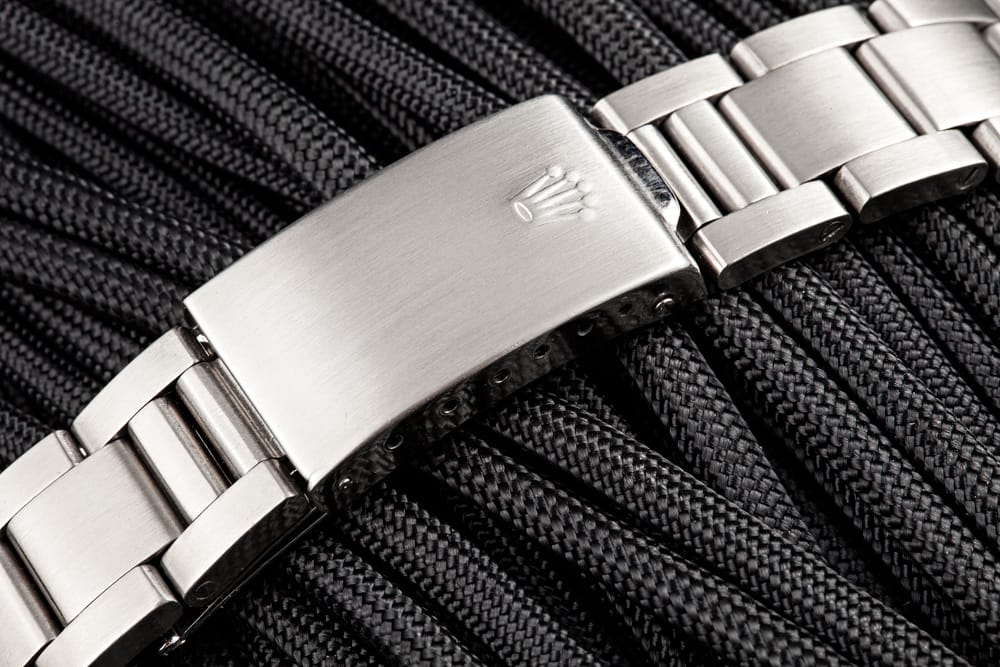
The Evolution of the Oyster Bracelet
The first generation of the Oyster lasted up until the late 1960s and is known as a rivet-style bracelet. Consisting of hollow, folded links, they are fastened together with rivets that are visible as small caps/studs sticking out along the sides of the individual links. This type of Oyster bracelet tends to be hugely popular with vintage fans. There was a fair degree of development with the bracelet in its early years, as there typically is with new Rolex products. As well as the standard variety, the manufacturer also issued the Oyster bracelet in an expanding link version which, although a good idea, proved too fragile to be used to secure a tool watch. Plus, anyone who has ever worn one will testify to the pain of getting arm hair caught in it.
By far the most significant advance to the Rolex Oyster bracelet came in 1952. Previously, the bracelet had come with straight ends, leaving a gap between the lugs where it joined with the rounded case. That was solved when Rolex came out with a curved end link, one that followed the shape of the watch case and married the two elements perfectly with a seamless appearance. The original GMT-Master ref. 6542 was the first to receive the upgraded bracelet when it made its debut in the mid-fifties, and it was soon seen on the Submariner and Explorer collections too. In fact, until the second generation of the GMT ref. 1675 was released with a Jubilee in 1965, Professional watches were only available with an Oyster bracelet.
Following the rivet style, the folded link Oyster bracelets came along around 1967. As the name suggests, each link on these involves a piece of metal being folded back over itself a number of times, forming a stronger and weightier construction. Thicker than the previous version, the securing pins were now internal and were no longer visible on the outer edges of the links. The subsequent generation featured solid side links with hallow center links, while the most recent version of the Rolex Oyster bracelet uses all solid links, including solid end-links. Far heavier than any of the previous generations, the contemporary Oyster bracelets provide a feeling of exceptional security.
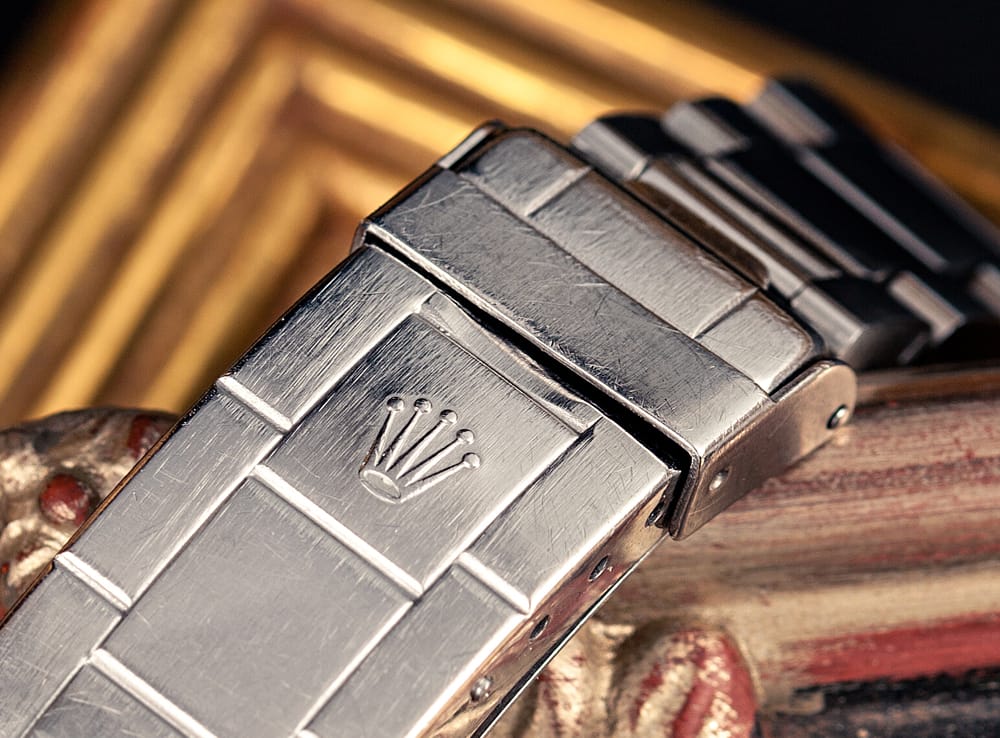
Rolex Oyster Bracelet Markings
Much like the watches themselves, Rolex’s bracelets have their own reference numbers. Usually stamped on the last link, these vary depending on the particular type and generation of the bracelet, in addition to the size of the end-links. In fact, the end links themselves are also given corresponding numbers, to make sure that they perfectly match with specific cases. With that in mind, one noticeable difference lies in the Oyster bracelets fitted to the Submariner and Sea-Dweller from about 1969 onwards.
As the definite dive watches of their generation, their clasps were judged to need more protection against accidental opening. These Oysterlock clasps have an additional fastening over the standard latching mechanism to keep them better secured during strenuous activity. The inclusion of the new clasp led to these bracelets being given separate reference numbers to help differentiate them from the Oyster bracelets that were fitted to Rolex’s other watches. Today Oysterlock clasps are fitted to a number of watches from Rolex’s Professional collection and are still found on both the modern Submariner and Sea-Dweller.
In addition to Rolex’s numbering system, markings found on vintage Oyster bracelets can often include the names of different manufacturers. From the 1950s to the 1970s, Rolex used several companies other than Gay Frères to supply their bracelets. In response to tax regulations at the time, the brand used USA-based C&I to make the Oyster bracelets for the North American market, and you may find their logo stamped on the inside of the clasp. Similarly, some were built in Mexico, which will be marked “Hecho en Mexico.”
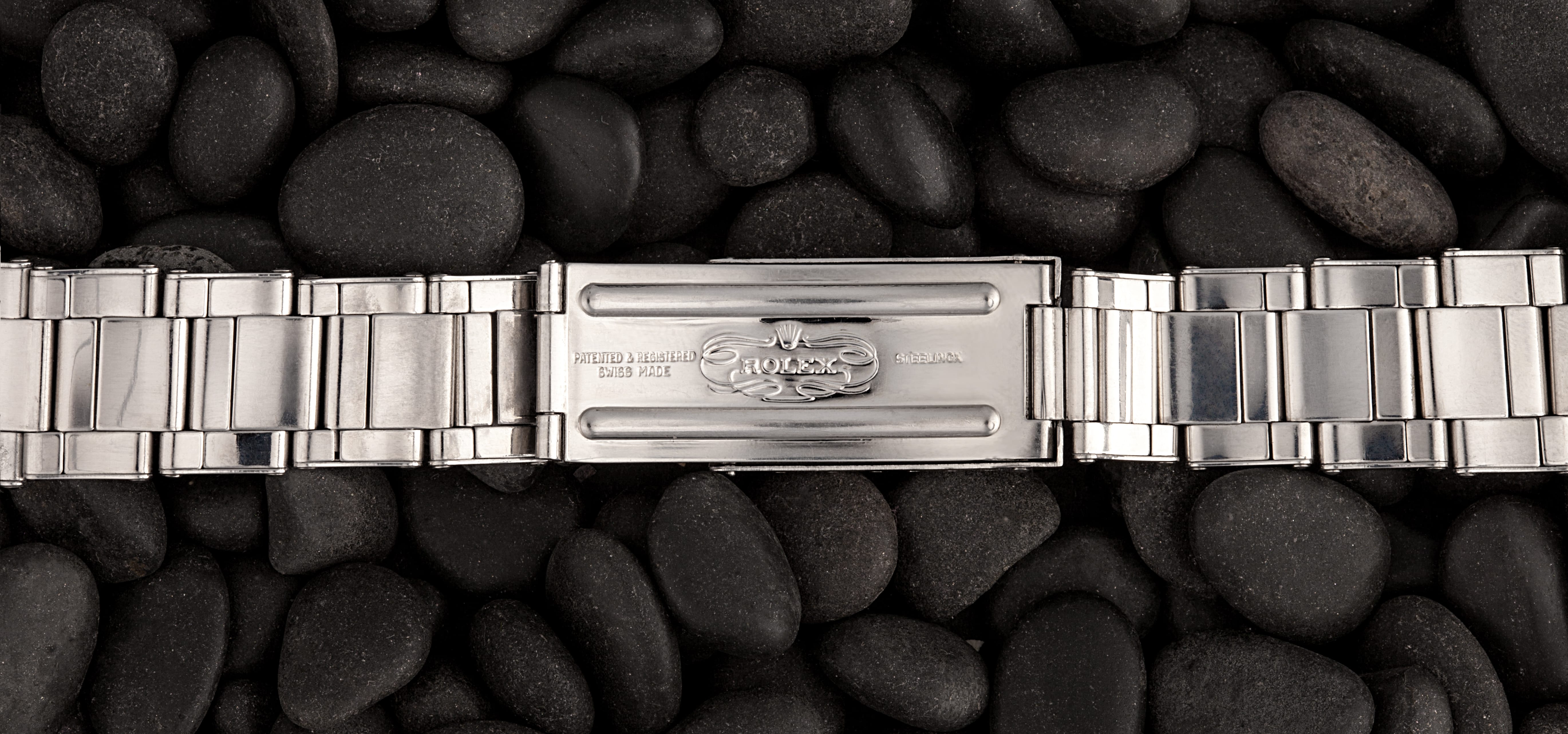
The Rolex Oyster Bracelet Today
Just as many Rolex watches have graduated to the level of status symbols, rather than the rugged tools they were originally designed to be, so have the bracelets changed with them – and none more so than the Oyster. Once only available in stainless steel, the Oyster bracelet is now forged from every type of metal combination that Rolex offers. In addition to the incredibly strong 904L stainless steel, you can have them in two-tone Rolesor (yellow or rose), all three colors of 18k gold (yellow, white and Everose), and even the shimmering luxury of 950 platinum.
However, regardless of the materials used in its construction, the Rolex Oyster bracelet remains the most versatile within the range, able to match just about any situation while providing rock-solid security. Widely used across some of the most celebrated models in Rolex’s history, the Oyster bracelet remains an essential element in the brand’s catalog.
